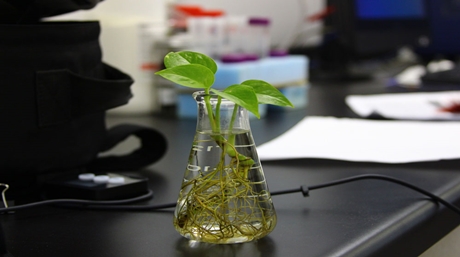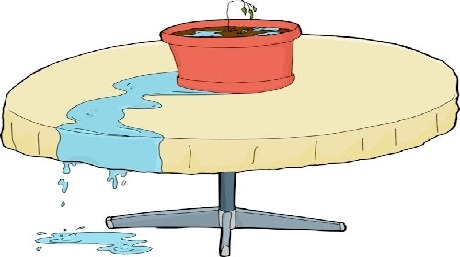 By:
Joe Green
By:
Joe Green
Much has been said about how easy or hard it is to grow cannabis. However, most of the perceptions of how complicated growing cannabis is are misconceptions. Most of the ideas that it is hard to grow cannabis should be debunked. It is not the rollercoaster of ups and downs that it is thought to be.
Let’s look at an example. The Deep Water Culture (DWC) technique is the most challenging approach among many aspiring growers. But, as this article will show, it isn’t as hard as it is thought to be.
Deep Water Culture (DWC) is a cannabis growing technique that uses a water tub instead of a solid growing medium.
TThe DWC setup involves suspending cannabis plants over the water tub while ensuring the roots hang into the tub. The tub is filled with nutrient-rich, aerated water. The basic principle here is ensuring that the plants get sufficient nutrients, oxygen, and ample space to support the root system.
You will have complete control over the plants and must ensure they have the conditions during the first growth phase – the vegetative stage.
As long as you maintain the water level and do not overfeed the plant with nutrients, you should be able to create an environment that allows for a high rate of growth. This is especially true in the vegetative stage.
Understandably, you may be curious about trying the DWC technique. However, to grow cannabis using the DWC technique, you will need to design your own setup.
Read on to discover five easy-to-follow steps to design a DWC system.
As mentioned above, the plants must be suspended over a tub of water. And this is where the reservoir will come in handy.
The light shouldn’t reach the roots. Therefore thick, black containers made of plastic should be used to stop lights from causing any problems.
Each reservoir should be up to 15 liters, as that is the volume needed by a cannabis plant to complete all its growth phases.
If you can, try to ensure that you only have one plant for each reservoir. Remember, this is the best way to ensure the plant gets adequate nutrients.
If you decide to grow more than a single plant in a reservoir, ensure they are the same strain from the same parent plants.
The top of the reservoir should be completely closed off, using a lid. The lid should be strong enough to hold a pot with a fully-grown cannabis plant. You want to ensure that the lid can hold the plant and block out any light.
Make sure that you cut a hole in the lid, which is tight enough to stop light from getting around the edge of the pot.
Multiple Reservoirs
You can follow this method if you decide to plant multiple plants in multiple reservoirs.
Use a large reservoir in the center of your grow space. Connect it to the smaller reservoirs using tubing. Then you can add nutrients and aeration to the water in the main reservoir. The water will then be transferred to the smaller reservoirs.
For this, you will need various pumps and tubing. You will also need a food-grade sealant for the areas where the tube goes into your other reservoirs. Alternatively, you could run the tube into the lid of each reservoir. If you do this, you must ensure that light does not get into the space where the tube is.
In DWC, the pots you use play a critical role in guaranteeing the well-being of the cannabis plants you grow. It is possible to make alter pots yourself.
If you are a bit creative, you can use hand tools to make holes in plastic containers to create improvised pots.
You will need to be extremely careful when making holes. You do not want to have sharp edges on your holes. The best way to do this is to use a hot soldering iron to melt holes into the plastic. This should create rounded edges, which are safer for the roots.
Fill up the pots using mediums such as clay pellets or perlite. You want to ensure that whatever you choose has good water retention properties.
When you germinate the seeds, use a starter plug or Rockwool. Carefully transplant them into the net pots two days after the plants sprout. You will need to water the seedlings until their roots reach the reservoir. You will want to stop watering the plant at this point so your plant remains healthy.
Temperature, pH balance, and nutrients are all essential considerations when growing cannabis using the Deep Water Culture technique.
The temperature in a DWC system should range between 17 – 20°C (62 – 68°F). There should be no fluctuation outside of this range. This is the reason why this method is tailored for indoor growing. It is much easier to control the temperature range when you are controlling it.
If the temperature drops below 17°C, you can use an aquarium heater to bring the temperature up to where it needs to be. Likewise, if the temperature goes above 20°C, you can use an aquarium chiller (or even a bottle kept in the freezer) to bring the temperature back down.
The pH of your reservoir water is critical for healthy growth. It would be best if you tried to maintain a range between 5.2 and 6.2.
If the pH balance goes above or below the given range, the plants can have issues absorbing nutrients. This will create issues with the growth of cannabis plants. Check the pH levels often to ensure that nothing goes wrong.
It would be best if you also ran enzymes through the reservoir(s) to prevent the build-up of waste materials or unused nutrients.
Aerating the water that your cannabis plant is in is essential to the success of your growth. Therefore, reducing airflow into the reservoir is essential to maintain the health of your plants.
Oxygen is vital in a DWC system. First, you will need to ensure that your reservoir gets sufficient air. An air pump is the best solution to this problem. It can ensure that air is introduced to the reservoir in the proper amount. Luckily, most air pumps are affordable. They can also last a long time if you maintain them properly.
While many strains of cannabis can do well in a DWC (Deep Water Culture) system, there are some factors to take into account which will help make sure that your growth is booming. First, it is better to choose a strain that grows well indoors. You should ensure that the strain can tolerate pH changes, higher humidity levels, and a potentially higher level of nutrients.
Many Indica strains do well in these conditions, which isn’t to say that Sativas won’t give a large yield using this method. It is mostly a matter of preference. Also, Sativas tend to grow taller than most Indicas, so training them can be an uphill task.
If you don’t know which strain to choose, look for Indoor marijuana seeds at AMS., which does well in indoor hydroponic grows.
Deep Water Culture (DWC) is a hydroponic technique for growing cannabis where plants are suspended over a nutrient-rich, aerated water reservoir instead of being planted in soil. The roots hang directly into the water, allowing them to absorb nutrients and oxygen efficiently.
While DWC might seem challenging initially, it is manageable with proper setup and monitoring. Beginners can successfully grow cannabis using DWC by carefully controlling water levels, nutrients, temperature, and pH balance.
Indica strains generally perform well in DWC systems due to their tolerance for indoor conditions and nutrient-rich environments. However, some Sativa strains can also thrive, though they may require more training due to their taller growth patterns.
[magento_products id=”41,43,44,45″]













Related Posts

We’ve put together a comprehensive guide on how to grow cannabis hydroponically. We’ll go over everything you need to know, tips you don’t want to miss, and mistakes to avoid. By the end, we want you to feel confident about your next grow project.

Let me be blunt…no pun intended…
Growing weed is not for the faint of heart. There is so much that can g(r)o(w) wrong and often times it takes a whole lotta trial and error to troubleshoot your problem. Nonetheless, reaping the rewards of a crop well maintained makes it all well worth it.